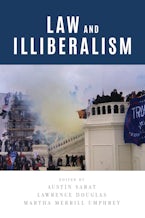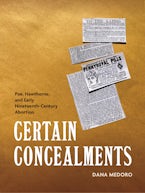- Home
- New England in the World
- The Genius of Place

The Genius of Place
The Geographic Imagination in the Early Republic
Published by: University of New Hampshire Press
Series: New England in the World
280 Pages, 6.00 x 9.00 x 0.80 in
Other Retailers:
The Genius of Place examines how, after the War of 1812, concerns about the scale of the nation resulted in a fundamental reorientation of American identity away from the Atlantic or global ties that held sway in the early republic and toward more localized forms of identification. Instead of addressing the sweep of the nation, American authors, artists, geographers, and politicians shifted from the larger reach of the globe to the more manageable scope of the local and sectional. Paradoxically, that local representation became the primary mode through which early Americans construed their emerging national identity. This newfound cultural obsession with locality impacted the literary consolidation and representation of key American imagined places—New England, the plantation, the West—in the decades between 1816 and 1836.
Apap's examination of the intersections between local and national representations and exploration of the myths of space and place that shaped U.S. identity through the nineteenth century will appeal to a broad, interdisciplinary readership.
Hardcover is un-jacketed.
Apap's examination of the intersections between local and national representations and exploration of the myths of space and place that shaped U.S. identity through the nineteenth century will appeal to a broad, interdisciplinary readership.
Hardcover is un-jacketed.
CHRISTOPHER C. APAP teaches English literature at Oakland University in Rochester, Michigan.
"Overall, the argument is compelling, and much of its pleasure derives from Apap's competent handling of less-known works, such as Timothy Dwight's Travels in New-England and New-York (1823) and Catherine Esther Beecher and Harriet Beecher's Primary Geography for Children (1833). Apap draws the works of Ralph Waldo Emerson, James Fenimore Cooper, William Gilmore Simms, and Washington Irving (for example) into conversation with a rich, complicated discourse about nation, place, and region. The breadth of the argument is matched by the depth of its analysis. . . . Highly recommended."—CHOICE
"Long before Abraham Lincoln attempted in his second inaugural address to bind the nation's wounds, early American writers, politicians, and geographers worried that the growing republic would splinter into regional factions. In The Genius of Place: The Geographic Imagination in the Early Republic, Christopher C. Apap describes how writers in the years after the War of 1812 described these regional divisions and sought to remedy them. In analyzing such sectional tensions, Apap foregrounds the importance of geographic heterogeneity in the construction of an American identity."—New England Quarterly
"Christopher Apap's The Genius of Place: The Geographic Imagination in the Early Republic explores this complicated relationship between the expansive space of the nation and efforts to imagine it in unified terms...Well-researched and supported by perceptive close readings throughout, The Genius of Place convincingly illuminates the powerful role that locality played in early US literature and nationalism."—Keri Holt, Utah State University, American Literary History
"It is when he is most attentive to humanistic geography and its refined phenomenology of meaningful place—as in his treatment of Indian and African American politics of emplacement, Catharine and Harriet Beecher's map of a desk in their geography textbook, or Emerson's 'scholar's garret'—that Apap's analysis of the geographic imagination in the early Republic is most illuminating."—William and Mary Quarterly
"The Genius of Place is an important intervention into our understanding of the relationship between geographical knowledge and U.S. cultural production. By moving beyond the normative confines of the nation state, Apap redefines the function of scale in the long nineteenth century and fruitfully prompts us to consider the complex relationships between the local, the sectional, and the regional in shaping national expansion and expression."—Duncan Faherty, author of Remodeling the Nation: The Architecture of American identity, 1776–1858











